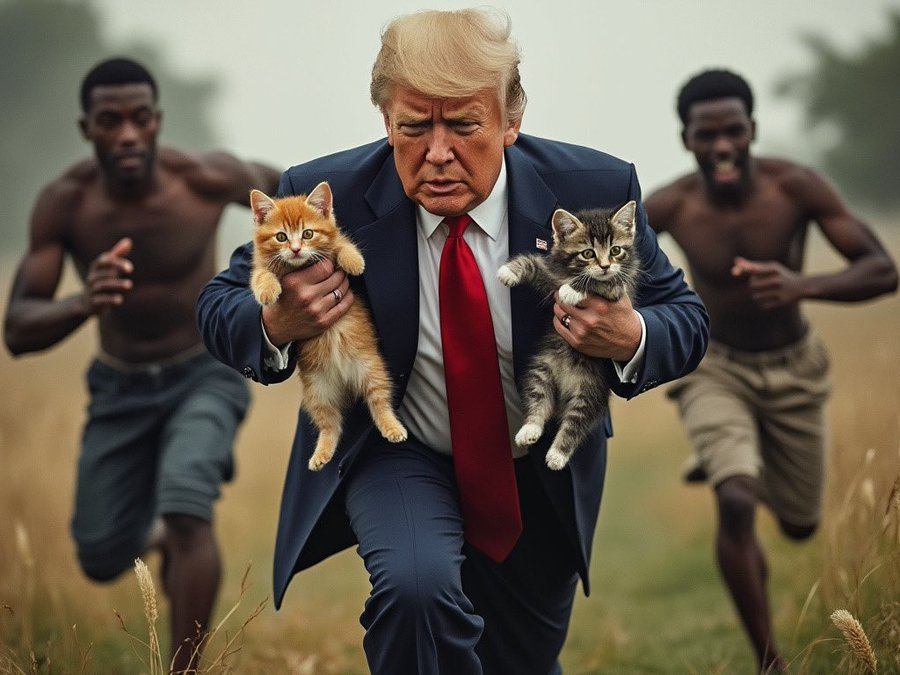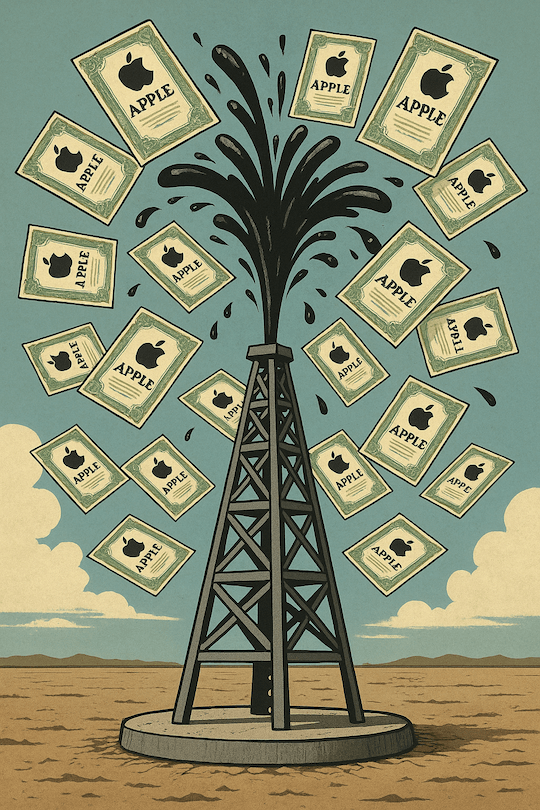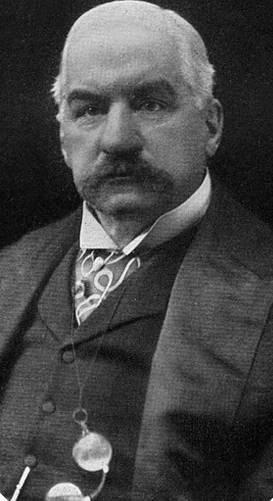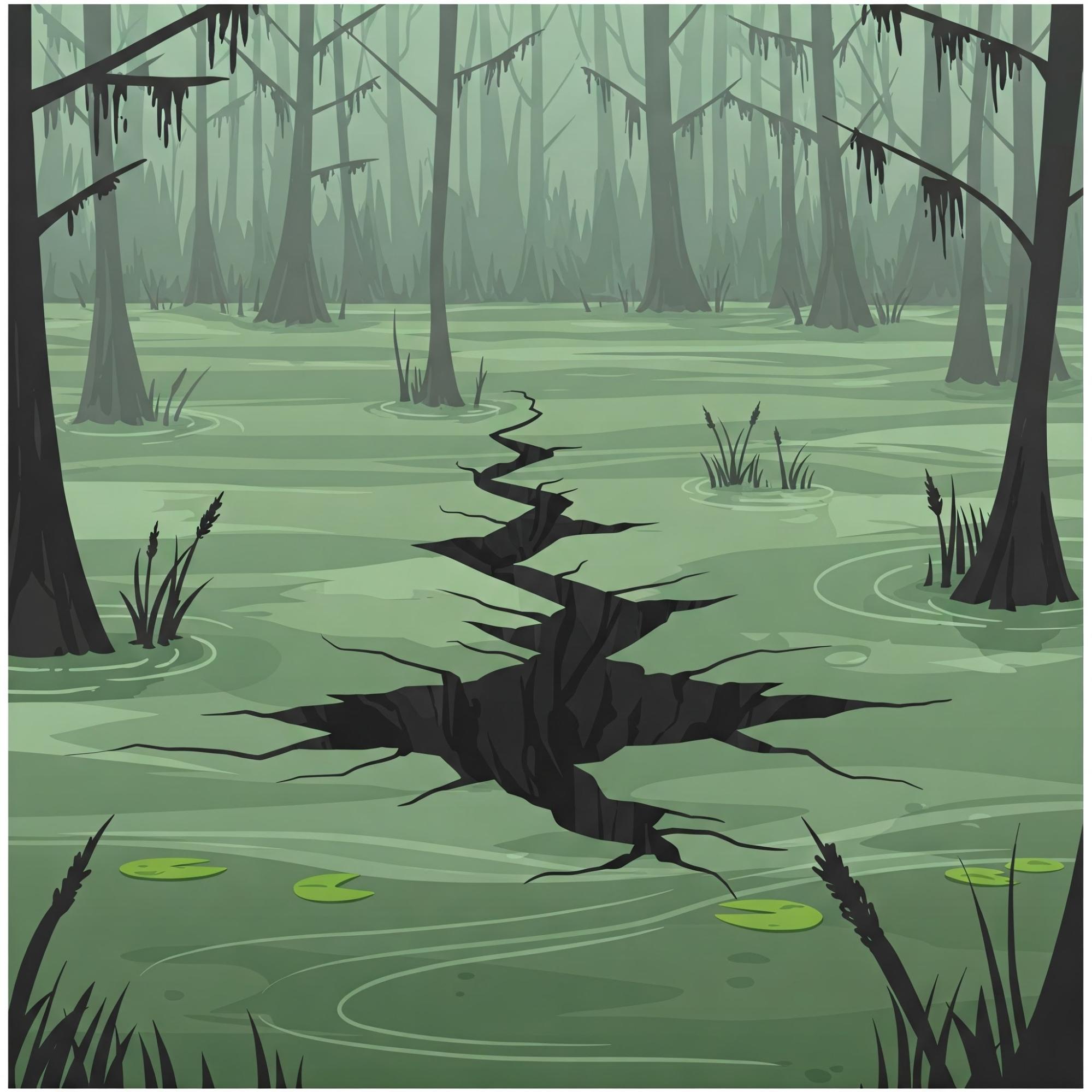Posted September 11, 2024
By Sean Ring
What Did Trump Grab in Ohio?
Reader, what the hell is going on in your crazy country?
I open up my X app, and I see tons of AI-generated pics like this:
 Credit: @stillgray
Credit: @stillgray
I had no idea what was going on. Then, I see stories of Haitian migrants allegedly capturing people’s pets, beheading them, and then eating them.
Amusing though those stories may be, they just didn’t ring true. And, of course, they weren’t.
But that didn’t stop a bunch of people from making fun of the situation by creating these AI pics of Trump rescuing all sorts of things, fare and fowl.
I know I banged on about this recently, but let’s revisit philosopher Hans-Hermann Hoppe’s view on restricted immigration anyway so you can see how directly it applies to the U.S.
The Incident in Springfield
Springfield, a mid-sized town in Ohio, has been at the center of a heated debate due to the significant influx of Haitian immigrants over the past few years. The New York Post estimates their number to be between 15,000 and 20,000, a figure that represents a quarter to a third of the town's population of 60,000.
To be fair, these immigrants fled Haiti's economic instability, natural disasters, and political turmoil, seeking a better life for their families. However, their arrival has been controversial. Amid the town’s economic struggles, where resources are increasingly stretched thin, the townspeople have understandably met the sudden arrival of immigrants with unease.
Recently, rumors spread that Haitian immigrants were responsible for the disappearance of local pets. The story gained traction in the community, with whispers suggesting that these newcomers had turned to eating dogs and cats due to desperation or cultural differences. Local news outlets picked up the rumors, and social media, always quick to fan the flames of division, ran with the story. Even VP candidate and current Ohio Senator JD Vance jumped the gun on X. Yet, there was no evidence, no confirmed cases, no dead pets found—just the simmering fear and suspicion that often accompanies rapid change in small, close-knit communities, a fear that cannot be dismissed lightly.
Hans-Hermann Hoppe on Immigration
Hans-Hermann Hoppe is known for his controversial stance on immigration, particularly his argument that the modern concept of unrestricted immigration undermines the principles of private property and cultural stability. Hoppe's ideas, though rooted in libertarian thought, challenge the notion that free trade should automatically extend to the free movement of people without regard to the consequences on local communities.
In Democracy: The God That Failed, Hoppe argues that free immigration, when coupled with the welfare state, leads to social and economic disruptions. He contends that immigration should not be viewed as a simple economic transaction but rather through the lens of property rights.
According to Hoppe, a nation is not a public good but an extension of private property. Just as homeowners have the right to determine who enters their homes, citizens also have the right to control who enters their country. This perspective contradicts the more childish libertarian belief that borders should be open and that people, like goods, should move freely across them.
Hoppe’s concern, which echoes the fears seen in Springfield, is that mass immigration leads to the erosion of cultural norms and the destabilization of communities, mainly when those immigrants come from radically different cultural backgrounds. Think France, Germany, and the UK. He suggests that unrestricted immigration introduces a clash of values, which leads to social conflict and even the breakdown of the legal and cultural framework traditionally defining a nation.
In a Hoppean framework, these accusations are not merely baseless xenophobia but a manifestation of the fear that mass immigration—especially from countries with vastly different cultural practices—might erode local values and customs. Even though the rumors about immigrants eating pets are unfounded, the anxiety they represent is real, stemming from the community’s concern over the rapid changes brought by the influx of immigrants.
The Balance Between Free Trade and Restricted Immigration
Hoppe’s critique of modern immigration policies is tied to his broader understanding of free trade. He’s a staunch advocate for the free exchange of goods and services, arguing that it leads to mutual benefits and increased wealth for all parties involved. However, he draws a sharp distinction between goods and people. Goods don’t bring with them the cultural values, legal traditions, or societal expectations that people do.
In Hoppe’s view, the fundamental problem with unrestricted immigration is that it treats people like goods, assuming that the movement of individuals will have the same positive effects as the movement of capital or products. Yet, unlike goods, people bring their customs, beliefs, and practices, which may not align with the cultural framework of the host society. In cases where immigration is rapid and unassimilated, Hoppe argues that this can lead to cultural clashes, social unrest, and the destabilization of communities. Again, see Europe as an example of this.
The Springfield incident reflects these concerns. Let’s assume that Haitian immigrants contribute economically and socially to the community. If so, they’ve been scapegoated for a perceived disruption of local norms and values. Though unfounded, the accusation that they are eating pets is a symptom of a more profound unease about cultural integration and the fear that these new arrivals might not conform to Springfield's established way of life. And that’s a fair point.
Hoppe’s solution to this problem is not a blanket immigration restriction, but rather the idea that immigration should be handled as a private property issue. Under a system of private property rights, communities would have the authority to decide who enters their spaces, allowing for a more controlled and voluntary form of immigration. This approach aims to avoid imposing culturally foreign practices on unwilling hosts, thereby promoting a more harmonious cultural integration.
The Role of the State and the Welfare System
Hoppe’s critique also targets the modern welfare state, which he sees as exacerbating the problems of unrestricted immigration. He argues that in a society where welfare programs are available to all, immigrants can become a financial burden on the host society, especially if they aren’t fully integrated into the labor market. This creates understandable resentment among the native population, who feel their resources are drained by people who have no right to the town’s treasury.
Hoppe argues that in a world without a welfare state, these tensions would be lessened, as immigrants would be welcomed based on their ability to contribute economically rather than being seen as potential drains on public services.
Wrap Up
Hans-Hermann Hoppe’s argument that immigration should be viewed through the lens of private property rights, rather than as an automatic extension of free trade, provides a way to think about how societies ought to manage immigration in a way that respects both the rights of individuals to seek better opportunities and the rights of communities to maintain their cultural integrity.
Ultimately, Springfield's key challenge—and any community facing similar issues—is finding a balance between welcoming newcomers and maintaining social cohesion. While Hoppe’s solutions may not be easy to implement today, they offer valuable insights into how we might rethink immigration to minimize conflict and maximize the benefits for all involved.

Fed’s “Stealth” QE Pushed Gold Above $3,400
Posted May 07, 2025
By Sean Ring

Turning Oil Into Apple
Posted May 06, 2025
By Sean Ring

Goodbye to the GOAT
Posted May 05, 2025
By Sean Ring

J.P. Morgan’s Last Rescue Mission
Posted May 02, 2025
By Sean Ring

Black Gold, Black Death
Posted May 01, 2025
By Sean Ring

